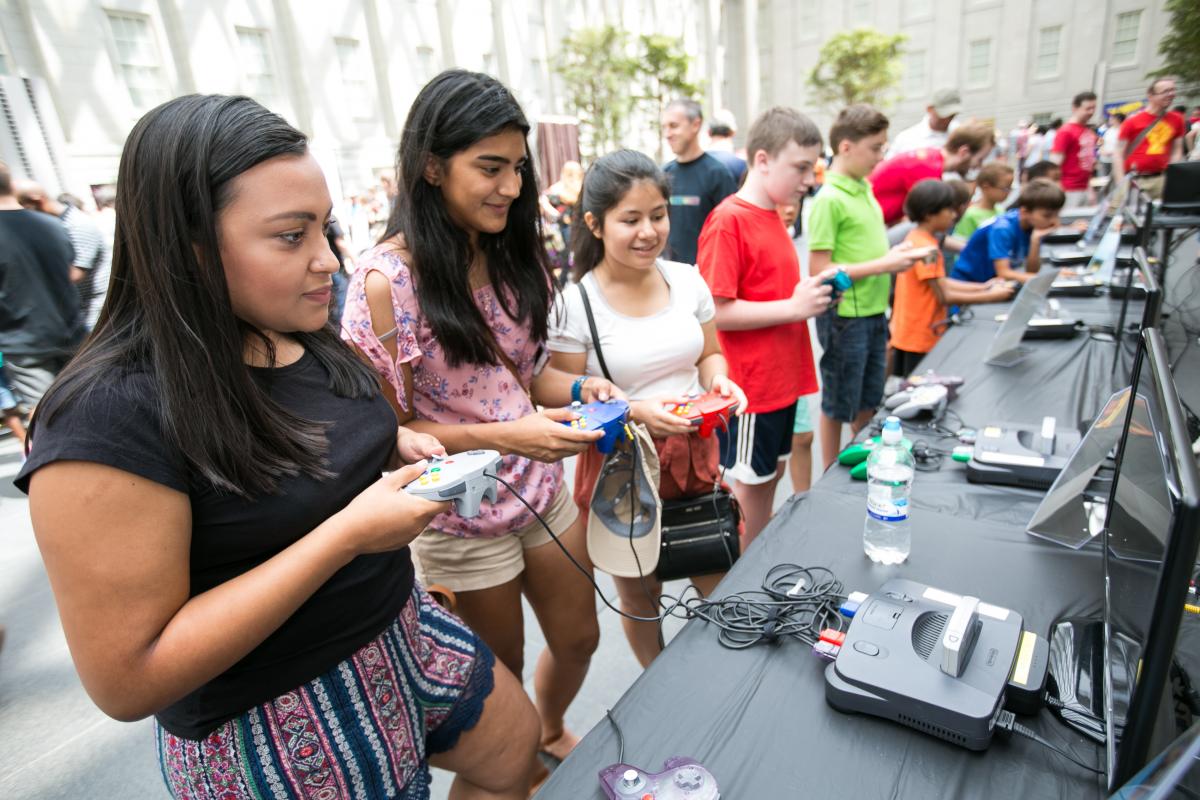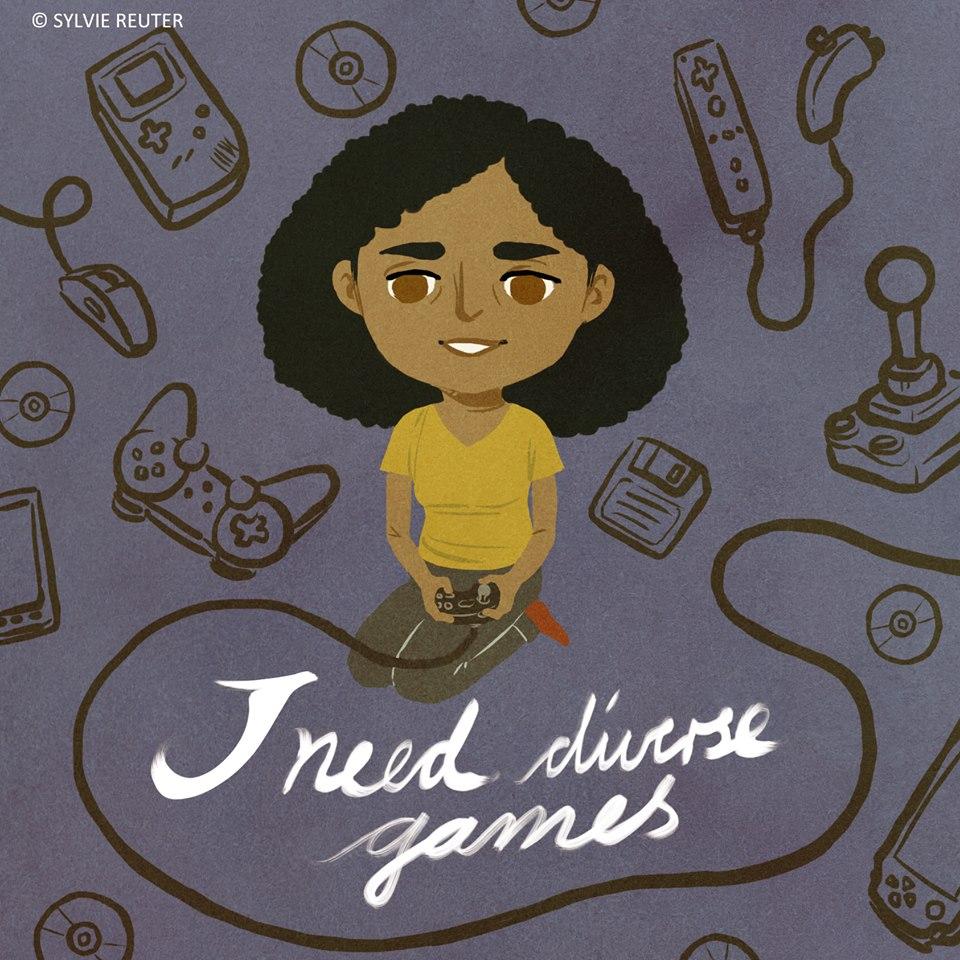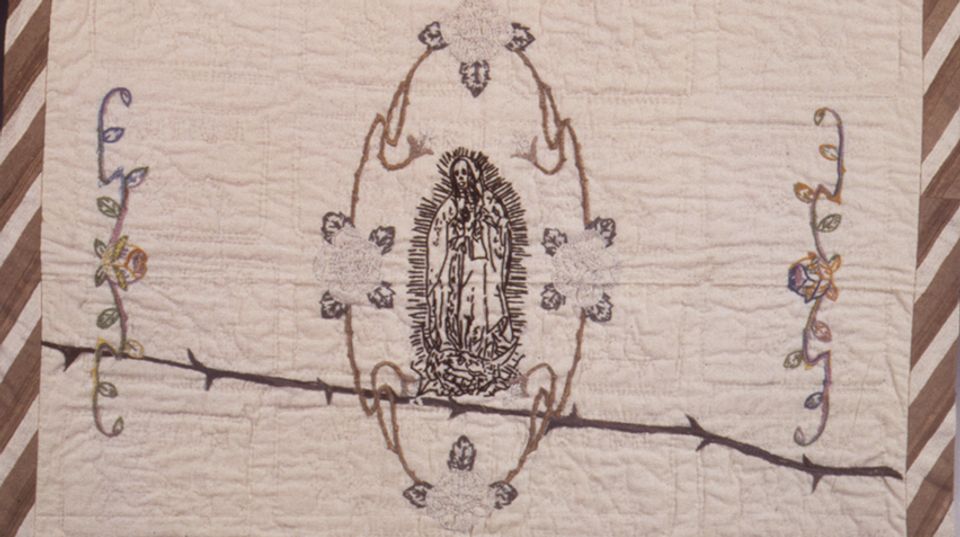
In August 2019, SAAM will host its fifth annual SAAM Arcade, a celebration of video games and their place in the canon of American visual culture. The theme of the Indie Showcase this year is “Breaking Barriers.” It will feature projects that recognize and relish the diversity of gaming audiences, where a wide array of players can see themselves and their interests reflected on screen.
To highlight this idea, we asked Tanya DePass, founder and director of I Need Diverse Games, to deliver a keynote speech at the Arcade. Tanya founded I Need Diverse Games in 2014 and has since become a powerful voice for diversity and inclusivity in the games industry. Lauren Kolodkin, one of the organizers of the event, sat down with Tanya to ask a few questions about her non-profit organization, video games and art, and her favorite video game characters.
Lauren: Was there a particular moment or event that inspired you to start I Need Diverse Games?
Tanya: It was a moment of frustration at the state of games, another year with a majority of scruffy white dude protagonists in games to come out, as well as it being too hard to animate women and the like. I had a real lightning in a bottle moment. The conversation hit at the right time, right place and the community grew from it, and to continue doing the work an organization had to be built out.
Do you think games are art?
Some games are art yes, but the discourse and discussion of games shows that many people cannot critique them in the same way art is critiqued. Look at articles about games that interrogate them on more than visuals, control and frame rate. For me, it feels that people often think of games as merely a fun diversion that should be discarded as they grow older, instead of an immersive, beautiful and sometimes terrible genre of works that can contribute to the argument of games as art. But it's also subjective; the games I consider art another person may scoff at. Same with any sculpture, painting, verse, etc.
Where do you think video and/or tabletop games will fit into museums in the future?
I think they will fit in as artifacts of human ingenuity and creativity—a look at what you can do when given a task of envisioning one's dreams or wanting to break barriers to show games can be more than shooting simulator 20xx. Tabletop games are already testaments to creativity and what people can do when they put their minds into creating worlds from whole cloth or from a sandbox.
We asked all of the applicants for this year’s indie developer showcase to tell us what a diverse games industry looks like to them. What does it look like to you?
A diverse and inclusive game has well rounded characters of all ethnicities, orientations, ability, mental wellness and illness without that being the focus of their character or why they are a hero or villain. Games that allow someone like me to be a hero without a dissertation-length reason as to why they exist, let alone are the one who has to save anyone or the world. We can have a woman or black lead character without cries and accusations of pandering to the supposed ravening and never satisfied ‘social justice warriors.’ We can just be heroes without people whining that they don't want to be a black character, and for tabletop that I can be a black elf without it being assumed to be drow. That a brown, queer, disabled character with mental health issues is not an anomaly or seen as unrealistic when I and many people are all those things in one package.
What is your favorite character to play as in Mario Party?
None, actually… I have never played Mario Party! My favorite character in Street Fighter is Cammy (with Ryu as a close second).
The fifth annual SAAM Arcade will be held on August 3 & 4, 2019. Tanya DePass will deliver her keynote on Saturday, August 3, at 6 p.m. If you can't attend the talk, tune in to the webcast.


















